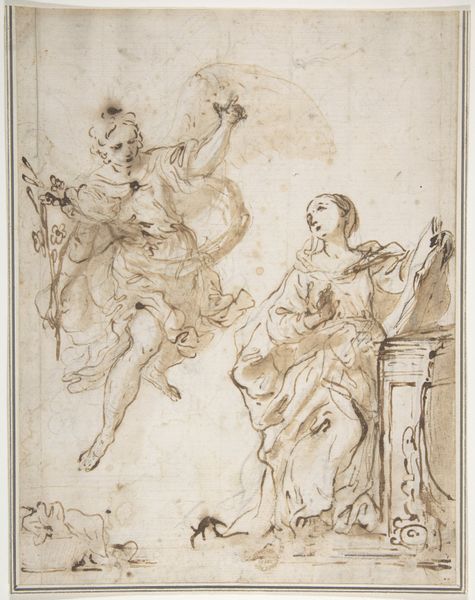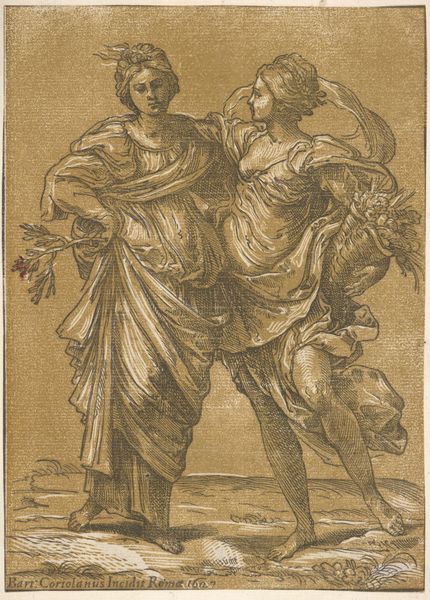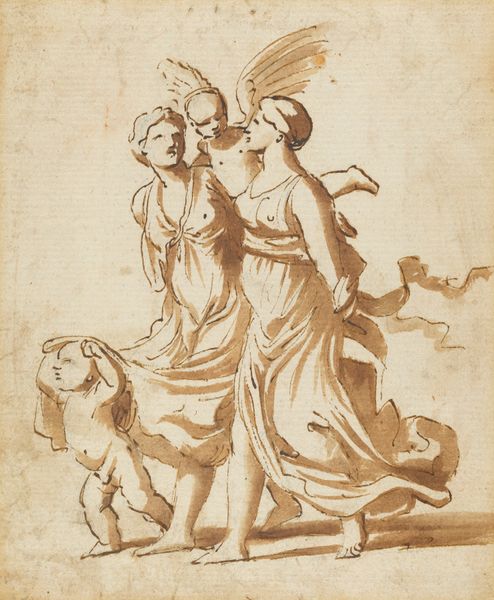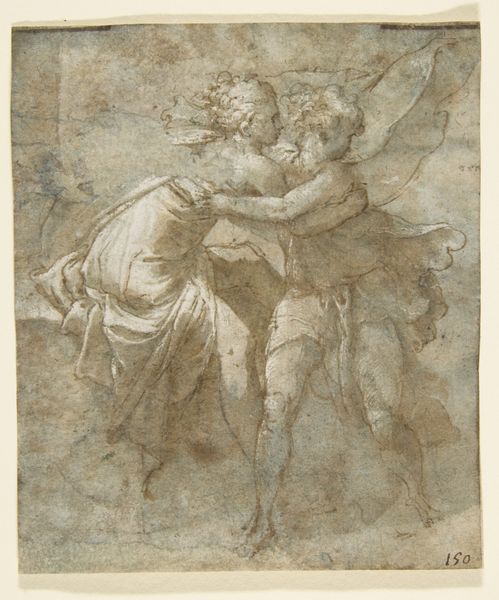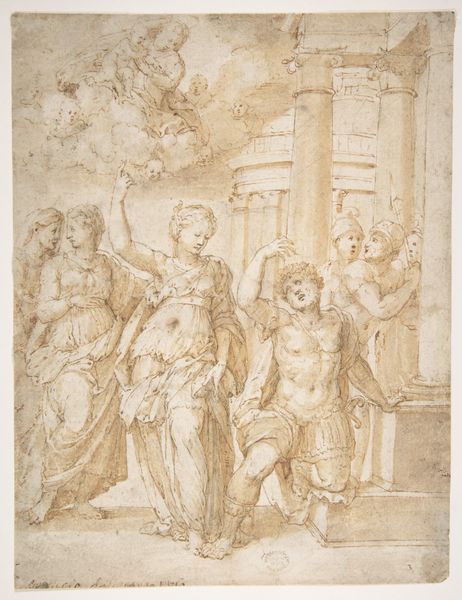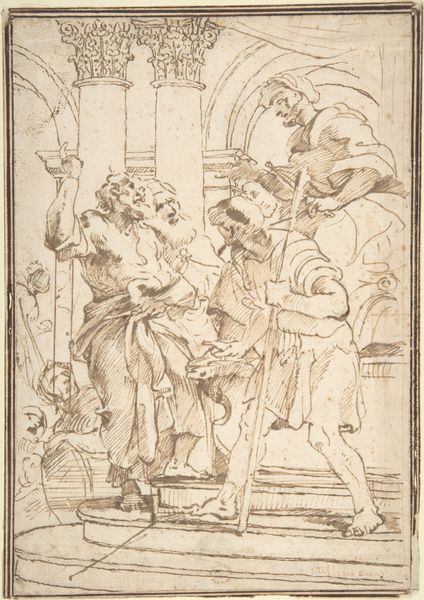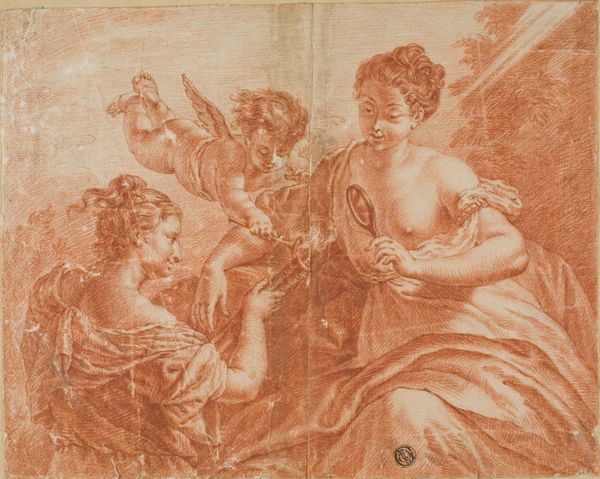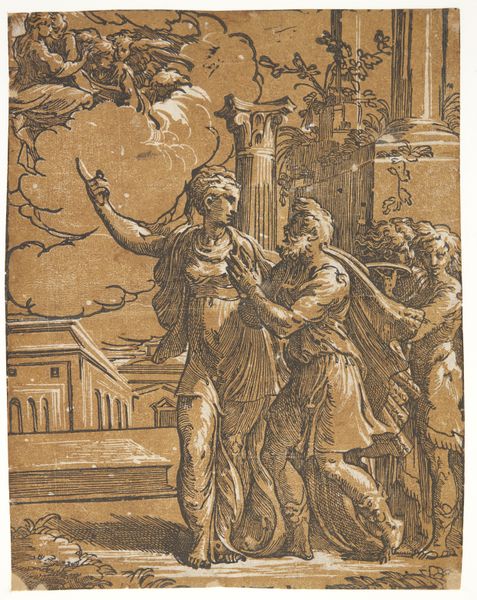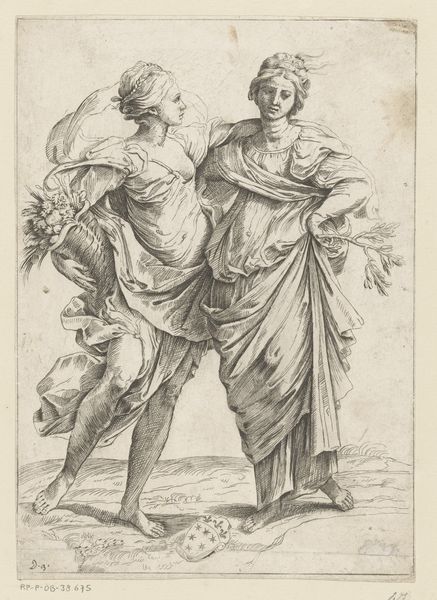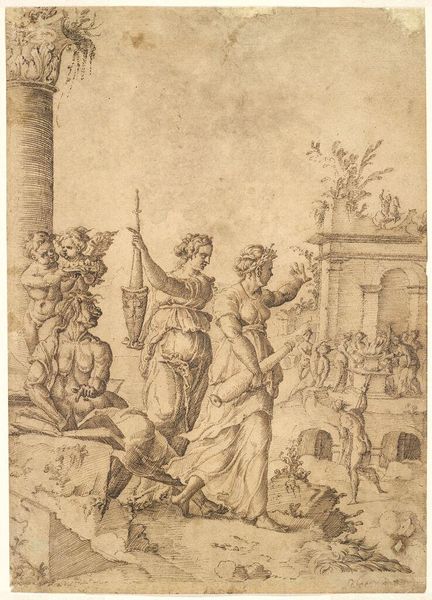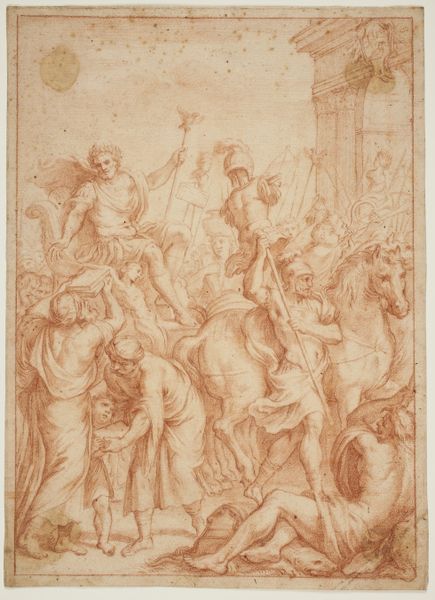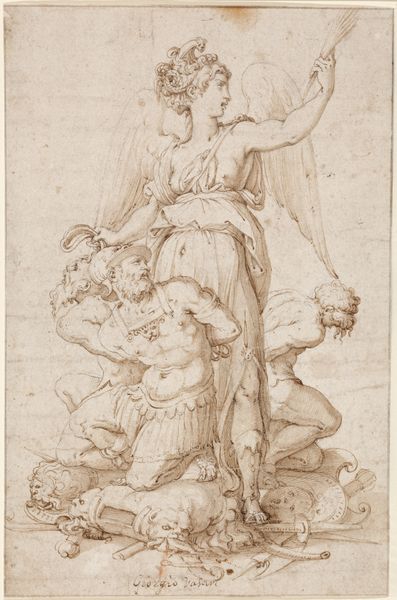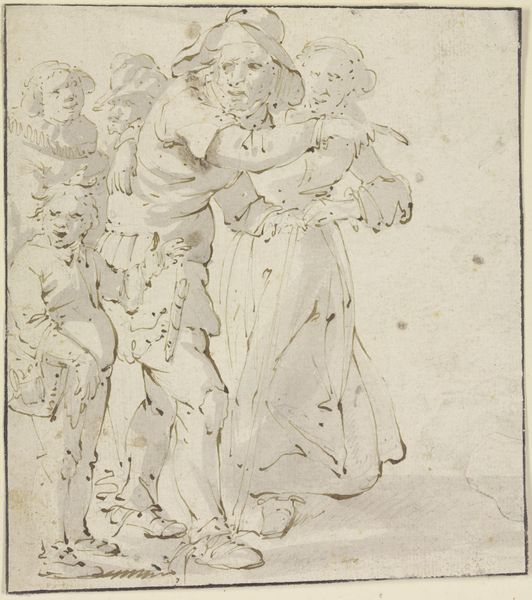
Dimensions: 9 1/8 x 7 1/4 in. (23.2 x 18.4 cm)
Copyright: Public Domain
Editor: Here we have Anton von Maron's "Judith with the Head of Holofernes," created sometime between 1733 and 1808. It's an ink drawing. I’m struck by Judith's almost triumphant pose – and of course, by the gruesome detail. It's so...stark, in a way. What do you see in it? Curator: It does have that immediate, visceral punch, doesn't it? For me, the brilliance lies in its sketch-like quality. It’s raw emotion captured in a few strokes. Think of the Baroque period; everything was about dramatic flair. Maron uses line and wash to suggest volume and depth, but the rawness keeps it intensely personal. You can almost feel the artist wrestling with the narrative, don’t you think? Is it victory, is it vengeance, or is it something more complicated? Editor: That's interesting. I initially saw Judith as simply victorious, but the rawness you mention does hint at something more conflicted. The quick, almost frantic lines make me question my initial interpretation. Do you think it invites a discussion about female agency in that time? Curator: Absolutely. Judith is this incredibly powerful figure subverting expectations. Consider the time – women weren't typically portrayed as these heroic figures. And to see her depicted mid-stride, head in tow... well, it was a statement. Imagine viewing this then: shocking, maybe even a little unnerving. How else do you see this defiance playing out visually, in its bare presentation? Editor: I guess that leads to wonder if Maron admired this agency, or feared it. He certainly seems conflicted by his choice to depict it with loose strokes, it might convey anxiety regarding the nature of justice when enacting retribution through an act of treason. The loose strokes lend immediacy as though the crime has been done hastily, so perhaps the emotional conflict is due to Maron's desire to convey it’s an uneasy action even when dealing with justice! Curator: Yes! Beautifully put, an uneasy victory it is indeed, that invites us to wonder: Does the end always justify the means? Thank you, your reflections give it an absolutely renewed light!
Comments
No comments
Be the first to comment and join the conversation on the ultimate creative platform.
